Wondering what is sublimation ink and what is it used for? Well, sublimation ink is a type of printing ink that is used to print images and designs onto a variety of substrates. The ink is heat-activated, so it can be used to create permanent prints that are resistant to fading and cracking.
Sublimation ink gets converted from a solid to a gaseous state using heat and pressure, bypassing the liquid phase. This means there is no water left in the printed image, making it much more resistant to fading. No wonder why sublimation inks have become quite popular in commercial printing because they produce high-resolution prints that are vibrant, anti-fading, and long-lasting.
Let’s find out how sublimation ink differs from other types of printer inks and also see if it can be used for regular printing jobs.
Read if you can use sublimation ink for regular printing.
Contents
- What Is Sublimation Ink?
- Types of Sublimation Ink
- Top Brands of Sublimation Ink
- What is Sublimation Ink Used for?
- Sublimation Ink vs. Regular Ink: What Is The Difference?
- Can You Use Sublimation Ink In Any Printer?
- Where to Buy Sublimation Ink?
- How Long Does Sublimation Ink Last?
- Wrapping Up
- Frequently Asked Questions
What Is Sublimation Ink?
Sublimation ink is a specialized type of ink that is used to print designs on different substrates including t-shirts, ceramic mugs, metal tumblers, and other items by using heat and pressure.
Sublimation ink is made of is disperse dyes. Disperse dyes are soluble in a variety of solvents, including water, glycols, and resins.
When sublimation ink is heated, the disperse dye changes from a solid to a gas. The gas then penetrates the substrate, where it cools and solidifies. This process results in a permanent and durable image or design.
Dye sublimation ink is not typically used for regular printing because it requires a special printer and substrate. However, the ink is resistant to fading and anti-UV which makes it a popular choice for printing high-quality images that will be displayed for a long time.
Types of Sublimation Ink
There are a variety of sublimation inks available, each with its own specific features and applications. Here is a brief overview of the most common types of sublimation ink:
1. Aqueous Sublimation Ink
This type of ink is made with a water-based dye, which makes it environmentally friendly and safe to use. Aqueous sublimation ink is also relatively affordable, making it a good option for budget-minded users.
However, note that aqueous sublimation ink can be less durable than other types of sublimation ink and may fade sooner than other types.
2. Solvent Sublimation Ink
This type of ink is made with a solvent-based dye, which makes it more durable and long-lasting than aqueous sublimation ink. The most common solvents are glycols and resins.
Solvent sublimation ink is ideal for printing large, detailed images. However, it is more expensive than aqueous sublimation ink and can be more difficult to use.
3. Dye Sublimation Ink
This type of ink is made with a dye that is suspended in a solvent. Dye sublimation ink is the most common type of sublimation ink and is available in a wide range of colors.
Dye sublimation ink is relatively affordable and easy to use, making it a good option for both beginners and experienced users.
Read is sublimation ink toxic to human?
Top Brands of Sublimation Ink
Although there are multiple brands of sublimation ink on the market, but a few stand out more than others due to their great-quality dye sublimation inks. Here are some of the top brands of sublimation ink:
- Epson (Popular among commercial printing companies)
- Printers Jack (Good for manufacturing anti-UV sublimation ink)
- Hiipoo
- HP
- Sawgrass
- Cosmos
- WOKOK
- Inkowl
So, if you planning to start with sublimation printing or selecting a better dye, pick a sublimation printer ink from any of the above brands that are compatible with your printer – you’ll admire the colors of the print.
What is Sublimation Ink Used for?
Sublimation ink is a popular choice for people who want to create custom and personalized items. Its popularity has spread so much that now ink for sublimation is being used for commercial purposes.
Here are some most popular uses of sublimation ink:
- Printing high-quality images for display
- Printing on non-traditional substrates like metal, acrylic, or plastic
- Printing on clothing and other fabric items like polyester and cotton, etc.
- Printing on mugs and other ceramic items
- Printing on glass
In short, sublimation ink is used in textile printing, promotional items, signage and displays, home décor, photography, and fine art, as well as industrial applications.
Its ability to produce vibrant, durable prints on a wide range of substrates has made it a preferred choice for professionals seeking high-quality customization and branding solutions.
Read a detailed guide on how to do sublimation printing.
Sublimation Ink vs. Regular Ink: What Is The Difference?
Sublimation ink undergoes a unique transformation from a solid to a gas state after applying heat and pressure, penetrating the material and resulting in vibrant, long-lasting prints.
On the other hand, regular ink is surface-applied and works well on porous materials like paper.
Sublimation ink offers exceptional image quality, durability, and washability, making it ideal for textile printing, personalized products, and promotional items, while regular ink is commonly used for general printing needs like documents and photos.
Here’s the comparison table between sublimation ink and regular ink.
| Feature | Sublimation Ink | Regular Ink |
| Type of Ink | Dye-based | Pigment-based |
| Printing Process | Transforms from solid to gas when heated | Dries on the surface of paper |
| Substrates | T-shirts, mugs, and other heat-transferrable materials | Paper |
| Image Quality | Vibrant colors, exceptional clarity | Good color reproduction, varying quality |
| Durability | Permanent and durable | Not as durable as sublimation ink |
| Cost | More expensive than regular ink | Less expensive than sublimation ink |
| Color Range | Wide range of colors | Limited color range |
| Application Scope | Textile printing, personalized products, promotional items, etc. | General printing needs, documents, photos |
Also, read the difference between sublimation printer and inkjet printer.
Can You Use Sublimation Ink In Any Printer?
No, you cannot use sublimation ink in any printer. Sublimation ink is specifically designed to be used with sublimation printers only.
These printers typically have special features like a heat-resistant print head, larger ink cartridges, and optimized color profiles.
From my personal experience, I got tempted and tried sublimation ink in a regular printer, it lead to clogging, poor print quality, and potential damage to my printer.
If you attempt to use sublimation ink in a regular printer, you will likely encounter such problems.
Where to Buy Sublimation Ink?
You can buy sublimation ink from a few different places. You can purchase it directly from the brand, from a retailer, or order sublimation ink online – from Amazon, Sublimation Warehouse, or Sawgrass
We advise doing some research before choosing a sublimation ink from any of the sources to make sure you are getting a quality product.
We recommend buying it from Amazon because you can read reviews of previous customers before making a purchase. They also offer a wide variety of sublimation products along with inks and have a great reputation for customer service.
Also, read the reviews of sublimation printers for beginners.
How Long Does Sublimation Ink Last?
This is a difficult question to answer because the life expectancy of sublimation ink depends on a number of factors, including the type of sublimation ink used, the type of substrate, and the climate conditions. However, sublimation ink is generally considered to be a more durable ink than other types of ink, and it is less likely to fade over time.
Textile – Sublimation prints on polyester fabrics are known to retain their quality even after multiple washes. The ink penetrates the fabric fibers, resulting in a permanent bond that resists fading, cracking, or peeling.
With proper care, sublimation prints on textiles can last as long as the fabric itself. However, the lifespan of the image may be reduced if the t-shirt is washed in hot water or exposed a lot to sunlight.
Ceramic Mugs or Metal Plates – The durability of sublimation ink on coffee mugs and tumblers can also be impressive. When handled with care and not exposed to harsh abrasives or extreme temperatures of dishwashers, sublimation prints can maintain their appearance and color vibrancy for up to 10 years.
Paper – Sublimation ink can last for up to 5 years on paper. However, the lifespan of the image may be reduced if the paper is exposed to sunlight, heat, or moisture.
Read how to remove sublimation ink.
Shelf Life of Sublimation Ink
And, if you are curious to know the shelf life of sublimation ink, it also varies depending on the brand and type of ink. Most sublimation inks have a shelf life of 2 years when unopened and stored in a cool, dry place.
Once the ink bottle has been opened, the shelf life may reduce to anywhere between 6 months and 2 years.
Wrapping Up
Now you know what sublimation ink is, what it is used for, and the difference between regular ink and sublimation ink.
Sublimation ink is a remarkable printing solution that offers vibrant, durable, and long-lasting prints on a wide range of materials. Whether you are in the textile industry, looking to create personalized promotional items, or seeking high-quality prints for home decor or fine art, sublimation ink provides exceptional results.
With its ability to bond with compatible surfaces at a molecular level, sublimation ink ensures that your prints withstand the test of time, maintaining their color intensity and clarity.
So, if you are looking for high-quality, durable ink that will produce stunning results, sublimation ink is the way to go.
Frequently Asked Questions
What is the difference between sublimation ink and regular ink?
Sublimation ink is a type of ink that is in solid form at room temperature but turns into a gas when heated. This key difference is what makes sublimation ink a better choice for printing high-quality images that will last for a long time. Additionally, sublimation ink is typically more expensive than infusible ink.
Can I use sublimation ink in a normal printer?
No, sublimation ink is not compatible with normal printers. Sublimation ink is only compatible with printers specifically designed for dye sublimation. If you try to use sublimation ink in a normal printer, you will likely encounter printing problems.
Is sublimation the same as inkjet?
No. Inkjet printers use infusible ink, which is a type of ink that is not in solid form at room temperature. Sublimation ink is a type of ink that is in solid form at room temperature but turns into a gas when heated. This key difference is what makes sublimation ink a better choice for printing high-quality images that will last for a long time.
What is the purpose of sublimation ink?
The purpose of sublimation ink is to produce high-quality images on special substrates. Sublimation ink gets converted from solid to a gaseous state using heat and pressure, bypassing the liquid phase. This means there is no water left in the printed image, making it much more resistant to fading.
- 5 Best 13×19 Sublimation Printer for Wide Format Substrates - December 27, 2023
- Best 11×17 Sublimation Printer to Print Tabloid Size Paper - December 26, 2023
- Epson ET-8550 vs ET-15000: Best Wide-Format EcoTank Printer - December 25, 2023

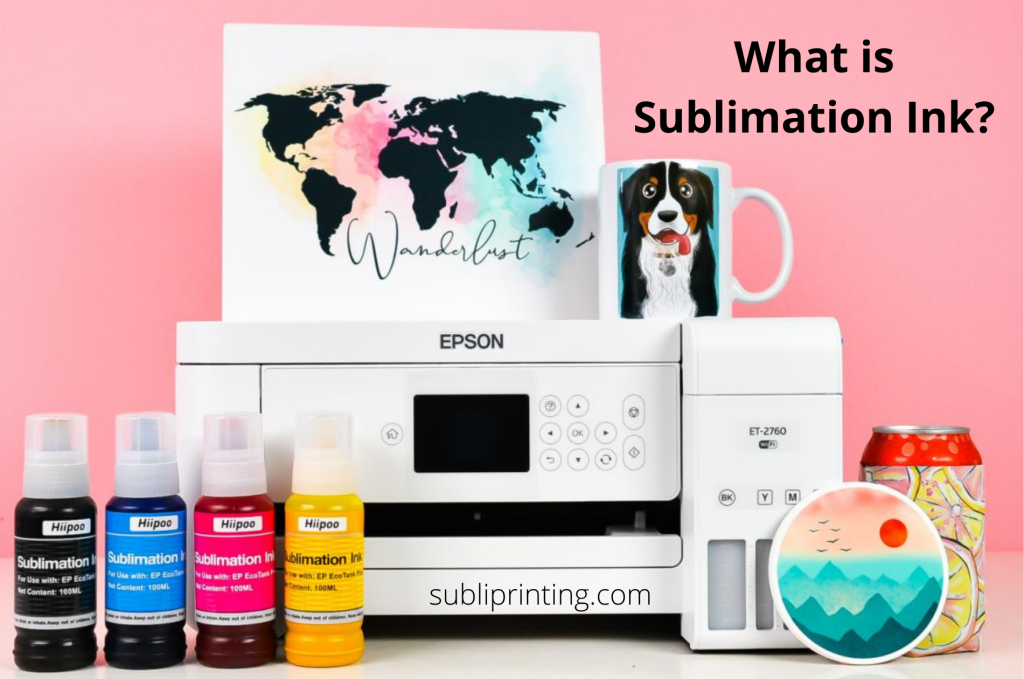


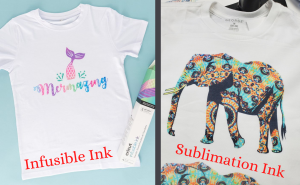
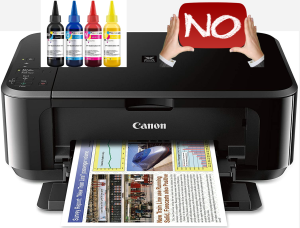
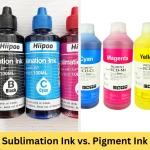


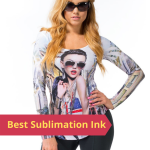
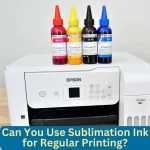

I do quilting on 100% cotton. Is there any brand that can be used on this surface?
I prefer to rely on personal preference rather than depending completely on a brand. However, You can try Moda Fabrics or Free Spirit Fabrics.